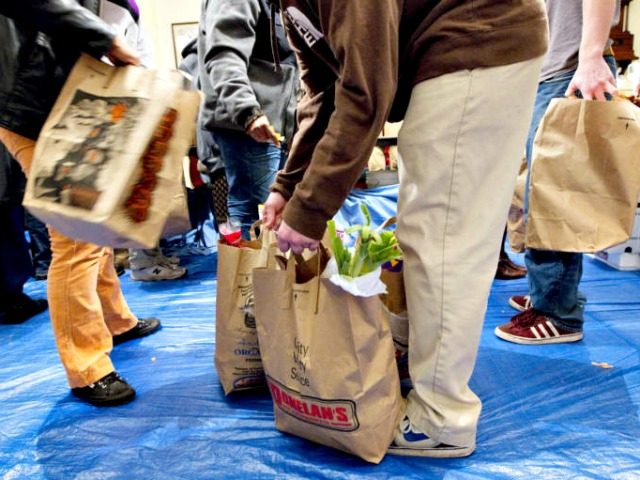Overall participation in the nation’s food stamp program dropped to its lowest level since November 2009, according to the latest statistics released by the U.S. Department of Agriculture (USDA).
The most up-to-date USDA data reveals that 38,934,197 Americans participated in the Supplemental Nutrition Assistance Program (SNAP), the federal government program that administers food stamps, in July 2018, marking the lowest level of participation in the federal welfare program in 9 years.
The last time the number of Americans participating in the food stamp program was that low was November 2009, when 38,184,306 participated.
The latest numbers also show that it is the ninth straight month enrollment in the food stamp program has declined.
Using the latest data from the USDA, here is the month-by-month breakdown of how many people canceled their SNAP benefits in fiscal year (FY) 2018:
October to November: 4,050,688
November to December: 360,995
December to January: 737,465
January to February: 385,456
February to March: 39,701
March to April: 426,055
April to May: 139,570
May to June: 143,834
June to July: 410,252
The consistent decline in enrollment during the past nine months is on pace with the steady decline in SNAP participation since 2013, and the decline seems to be continuing during President Trump’s tenure in office.
Since February 2017, Trump’s first full month in office, enrollment in SNAP dropped by 3,200,104, according to the latest USDA data.
The enrollment drop under Trump can mainly be attributed both to the Trump administration’s efforts to reform the nation’s food stamp program and the improving economy.
The agency announced in March that it hired an “integrity officer” to bolster the administration’s efforts to prevent fraud in the country’s SNAP program and announced in February the rollout of its “Harvest Box” program to give food stamp recipients a box of food as part of their monthly benefits package.
Trump also released an executive order on welfare reform in April that would require the USDA to issue updated rules for those receiving benefits such as food stamps and to invest in workforce development programs.
But the work requirements reform that began getting most people off of food stamps at the state level has not yet been implemented at the federal level.
The reform, which gained traction in state legislatures in 2013 under the Obama administration when enrollment in food stamps reached its peak, required food stamp benefit recipients to work, participate in job training, or volunteer for 20 hours per week to receive benefits.
Many states implementing the work requirements during the past few years have reported success in getting people off of food stamps and back into the job market, and more states have started enforcing them.
A House version of the bill in May estimated that if such a reform was implemented at the federal level, it would get at least 1.6 million people off of food stamps.
Trump had urged Congress to pass federal legislation to implement food stamp work requirements nationwide in the 2018 Farm Bill.
The House version of the Farm Bill narrowly passed by a 213-211 vote and included the work requirements provision. The bill passed with no Democrat support. The Senate bill did not include the food stamp provision. The previous year’s Farm Bill expired at midnight on September 30.

COMMENTS
Please let us know if you're having issues with commenting.